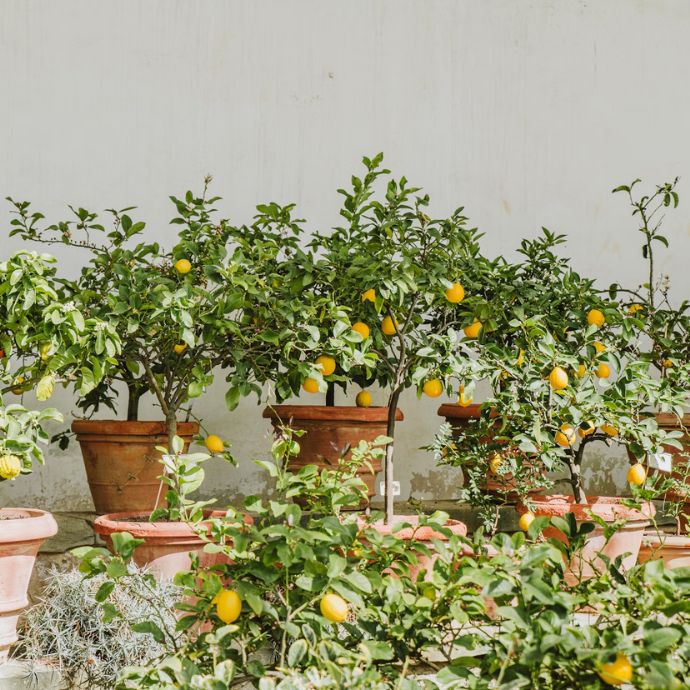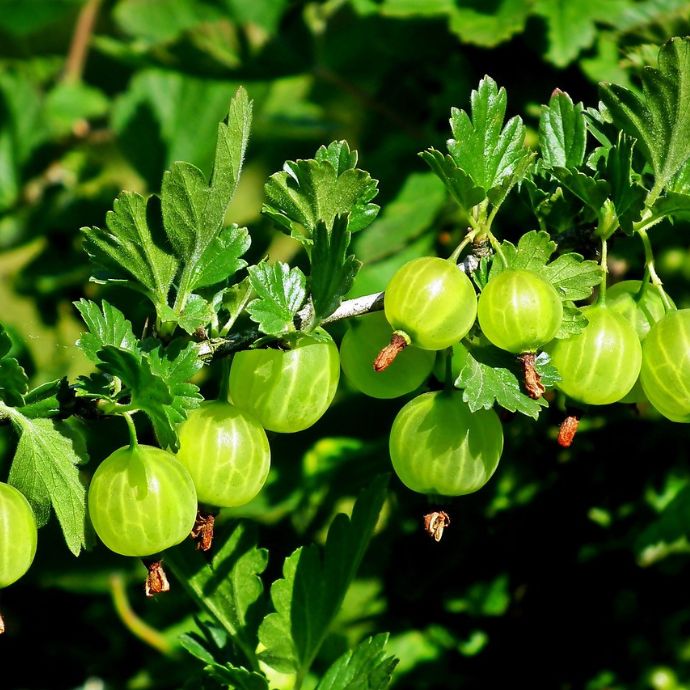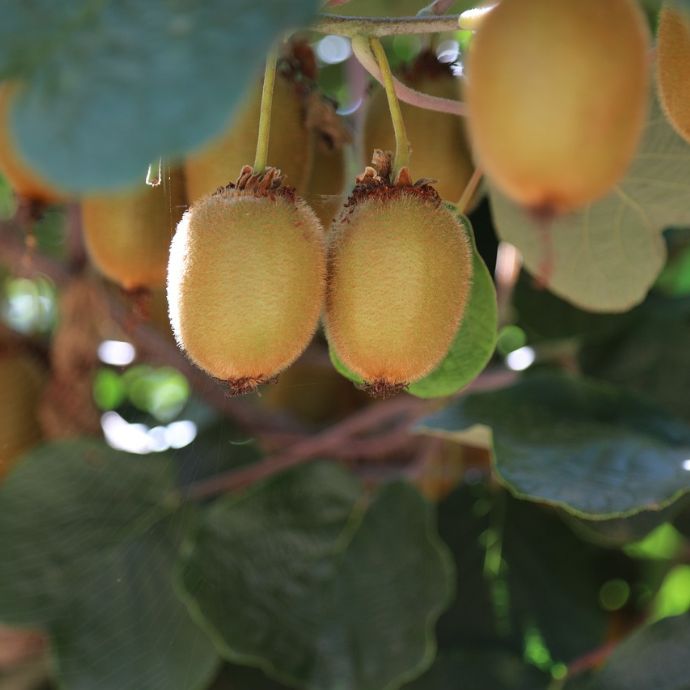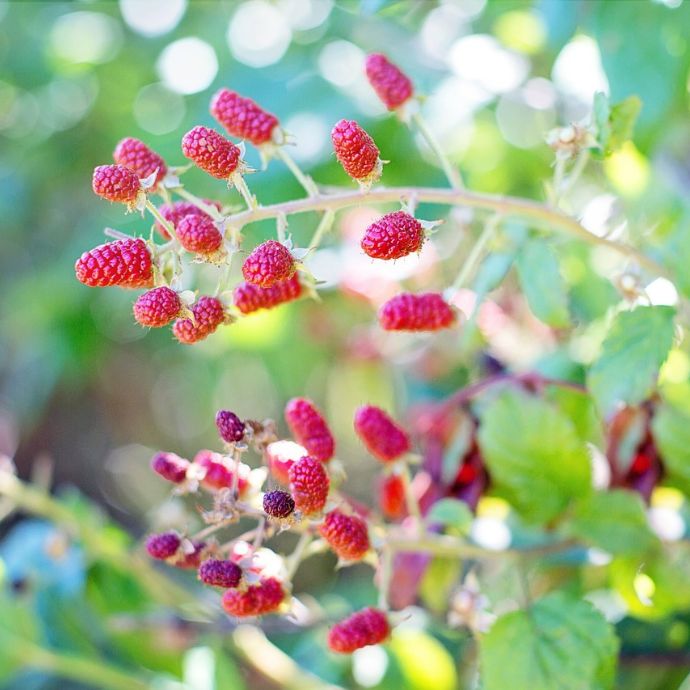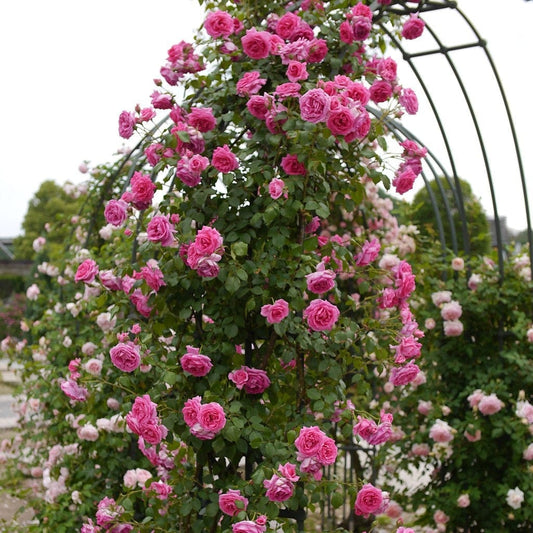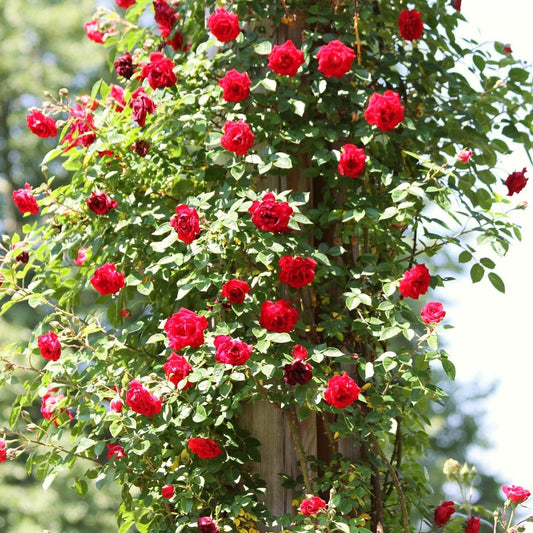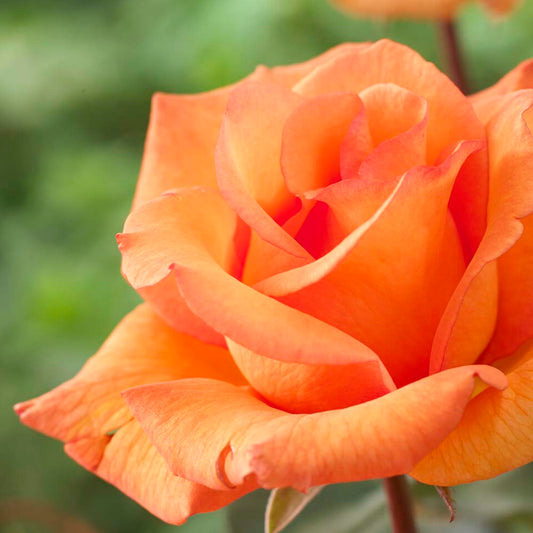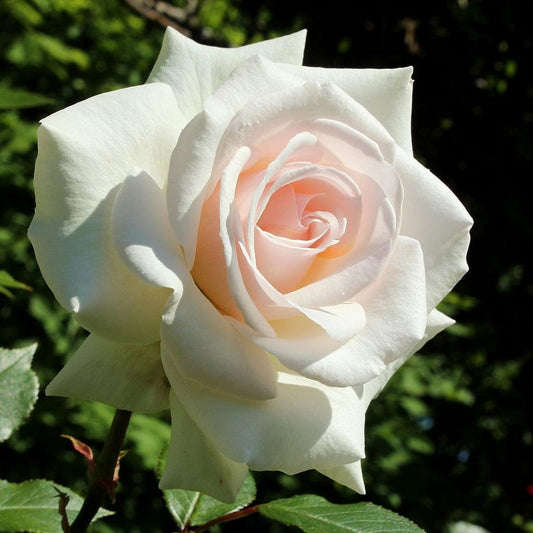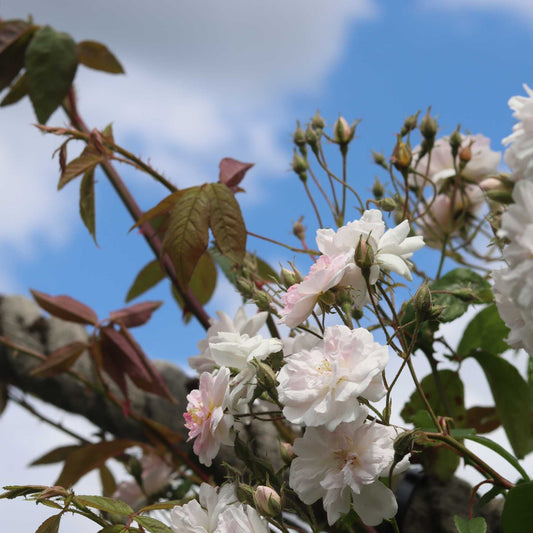Rose Plant Diseases and Pests: Signs and Solutions
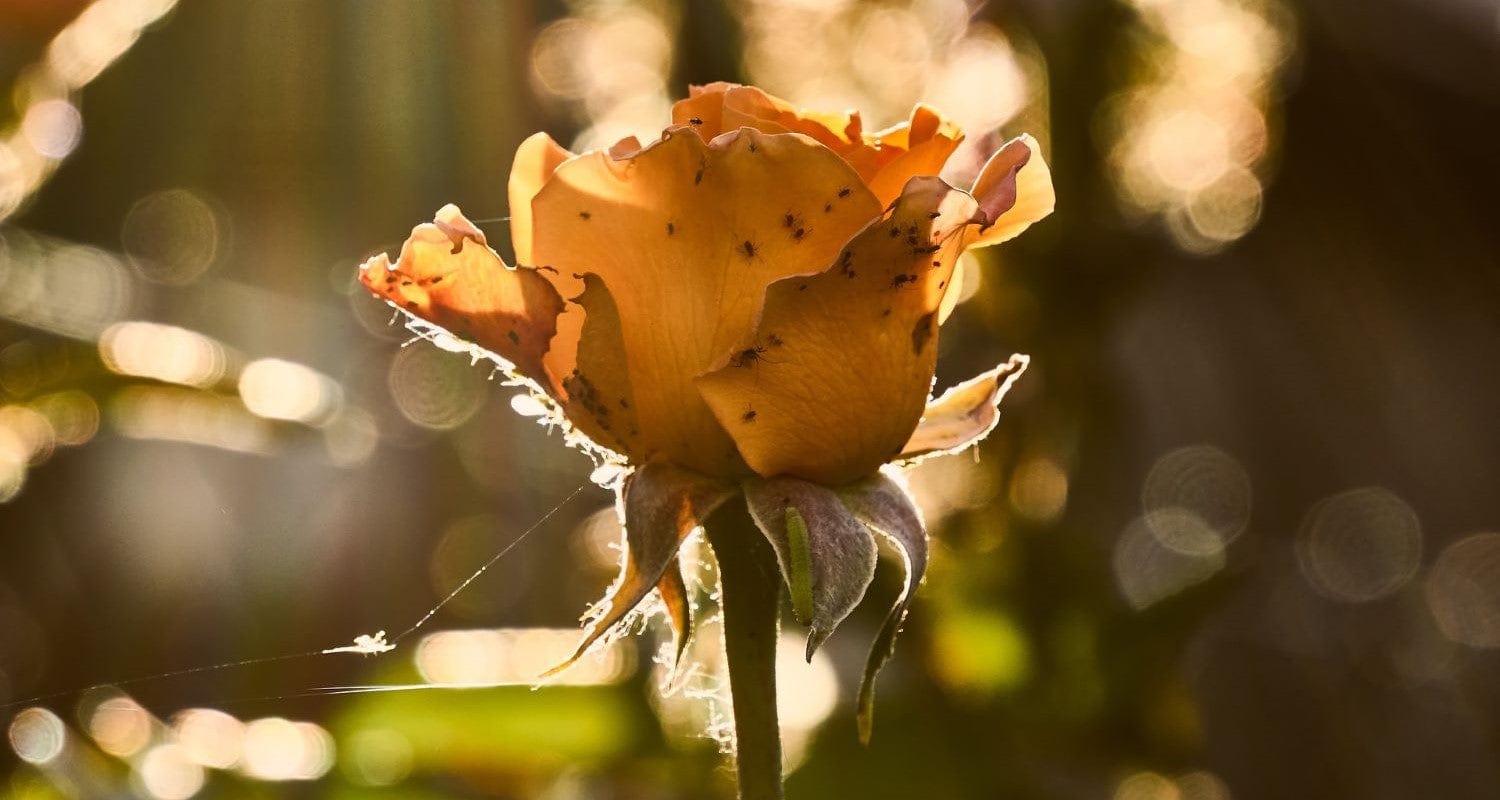
If you plant your rose in a sunny position, water and feed it regularly and keep it well pruned, chances are you’ll be enjoying it without too much trouble for years to come.
But even the most pampered plants sometimes come down with a disease or get targeted by pests. Don’t worry - most can be prevented or fixed! We asked our growers which are the common rose plant diseases and pests to be aware of, the signs to look out for, and the best ways to deal with them - here’s the low down.
Jump to
Diseases:
Pests:
And finally…
Rose diseases
Rose Black Spot
The Black Spot strikes fear into the hearts of pirates and gardeners alike. Luckily for roses it doesn’t do too much damage in and of itself, but does look pretty terrible. It’s spread from plant to plant by airborne spores.
How to prevent it
You know when they say ‘mulch your roses every year’ and you’re like ‘nah, I’ll do it some other time’? Yeah, this. Mulching (surrounding the base of your rose plant with compost, manure, bark chips or straw) helps to prevent the spread of diseases like Black Spot. No rose is immune, but it also helps to choose one which has high disease resistance.
What it looks like
Dark black spots on the leaves and stems. Affected leaves may fall off prematurely.

What it does to your rose
Black spot looks worse than it is. The worst thing it does is stress your roses out so that other, worse diseases can get a hold.
How to get rid
You’ll need to collect up and destroy the fallen leaves (in the landfill bin or with fire, not in the compost), or they’ll release spores which stay in the soil over winter and re-infect your plants. This is where the mulching comes in - it helps prevent the disease spores from fallen leaves multiplying in the soil. Did I mention you should mulch?
Powdery Mildew
Powdery mildew is an airborne fungal disease which can seriously affect the health of your rose.
How to prevent it
The best way of banishing powdery mildew is to plant your roses in the best position, with plenty of space between them to allow good air circulation and in full sun so they don’t stay damp after the rain. Soil should be moist, but well draining - if yours is on the boggy side, you’ll need to mix in some perlite or fine horticultural grit when planting.
What it looks like
Powdery mildew appears as white or grey powder on the young leaves and shoots.

Image credit: BlueRidgeKitties.
What it does to your rose
If left to its own devices, powdery mildew will slow the rose’s growth. If it spreads to the buds, they won’t open, but will drop off. Depressing.
How to get rid
The best way to treat powdery mildew is to cut out all the affected parts of the plant and dispose of them (again, in the landfill bin or with fire). You can also check your roses in spring before the new growth appears and cut out any shoots with patches of mildew around the thorns.
Rose Rust
Rust is a serious fungal disease that is best treated if spotted early on.
How to prevent it
This is another disease which can be prevented by encouraging good airflow - leave plenty of space between your roses and when pruning, cut out any growth that’s crowded or crossing. It’s also thought to help if you feed your roses with a potassium rich feed from spring to autumn.
What it looks like
Like your neighbour has spray painted their fence badly and it’s spattered your roses. Orange splotches that turn to black if they’re left.

What it does to your rose
Rust weakens the rose, slows its growth and causes the leaves to drop off.
How to get rid
From early summer, check the underside of the leaves for small orange pustules and if you find any, pick off and burn the affected leaves and stems. Once the rose is dormant for the winter, you may be able to save it by gathering up any fallen leaves and mulching the ground. If Rust is left to develop until the pustules turn brown or black and get larger, it is probably too late. If it spreads into the stems, all you can do is dig up the rose and burn it.
Rose Dieback
Dieback is caused when your rose plant is stressed or damaged and can allow infections to take hold.
How to prevent it
You can guard against dieback by keeping your roses as strong as possible. This means avoiding dry or waterlogged soils, feeding in spring and yes, mulching. Prune out any dead or damaged wood as soon as you find it and remove any weak or crossing branches at the same time. It’s sometimes caused by frost damage, which can be prevented to some extent by planting in a sheltered spot away from cold winds.
What it looks like
If the tips of your roses are brown and shrivelled, it’s likely to be Dieback. You might also see root damage or black fungus on the affected parts if it’s more advanced.

What it does to your rose
Dieback causes shrivelled stems, preventing the rose from developing normally and sometimes killing it altogether.
How to get rid
You’ll need to prune out all the infected parts - as long as over half of the affected rose is still healthy, it should be able to recover.
Replant Disease
This disease happens where roses are planted in the same position as a previous rose, and is caused by a buildup of diseases and pests in the soil.
How to prevent it
I could tell you not to plant a rose in the same spot as a previous one, but life’s not that simple and you don’t always know what’s been there before. If you know you’re planting in the same position, line the planting hole with cardboard or remove all the soil and replace it with soil from another area of the garden, or new compost. Add mycorrhizal fungi to the planting hole, mulch around the new rose and feed it with a nitrogen rich fertiliser.
What it looks like
Affected roses grow slowly and are badly affected by pests and diseases.

What it does to your rose
The rose will be slow to establish and will grow poorly, even dying.
How to get rid
Prevention is everything in this case. If you have an affected rose, you could try digging it up and planting in a better position, but if it’s too far gone, you might be better off cutting your losses and replacing the rose (BUT NOT IN THE SAME SPOT).
Rose pests
Aphids
Aphids, AKA greenfly or blackfly, suck the sap from plants and excrete a sticky substance that if left, can lead to black mould.
How to prevent them
There’s the $64m question. Aphids are pretty ubiquitous, so really we’re talking about reducing them rather than eliminating them. The best solution is to encourage predatory insects like ladybirds, hoverflies and earwigs through a technique called companion planting.
What they look like
Aphids appear as clusters of tiny green or black insects on the flower heads and stems of roses.

What’s the damage?
A few aphids won’t do much damage, but if they multiply, they can stunt the plant’s growth, leaves may curl up and the rose will be weakened generally. The sticky excretions of the aphids can cause moulds to grow and they can also leave white skin casts on the leaves which looks gross.
How to get rid
The received advice is to remove aphids by hand and squash them, but who wants to do that? Alternatively, you can use a spray made of soapy water or water and oil to remove them from your plant. Find out how to make your own sprays from ingredients you already have at home. I usually just blast them with the hosepipe!
Rose Sawfly
One of the most serious rose pests, with a double pronged attack from both eggs and larvae. Yikes.
How to prevent them
The best way to prevent sawfly damage is to encourage their predators - that’s wasps, ground beetles and birds.
What they look like
Sawflies are orange and black, but you might not see them - what you will see is their caterpillar-like larvae, which are spotted black, green and yellow.

What’s the damage?
Sawflies lay their eggs on young rose leaves, then inject a chemical into the leaf to make it roll up around them. Ingenious but deadly. If the eggs are laid in a rose stem, it can make it split open, causing unsightly scars and allowing infections to take hold. When the larvae hatch, they set about stripping the leaf until just a skeletal outline remains. Young roses are worst affected, with established plants usually being able to bounce back.
How to get rid
Remove the rolled up leaves and bin them - if there are too many however, you’ll have to leave them as the rose will suffer more from lack of foliage.
Leafhoppers
Leafhoppers are sap sucking insects that feed on the surface of rose leaves.
How to prevent them
The best way to keep leafhoppers away is to encourage birds and predatory insects such as ladybirds and lacewings to your patch, by using companion planting.
What they look like
Leafhoppers look a bit like someone stretched an aphid on the rack. They have weird boggly eyes and the adults can jump. You may also see their white skin casts left on the leaves. Their larvae look similar, but somewhat translucent and without wings.
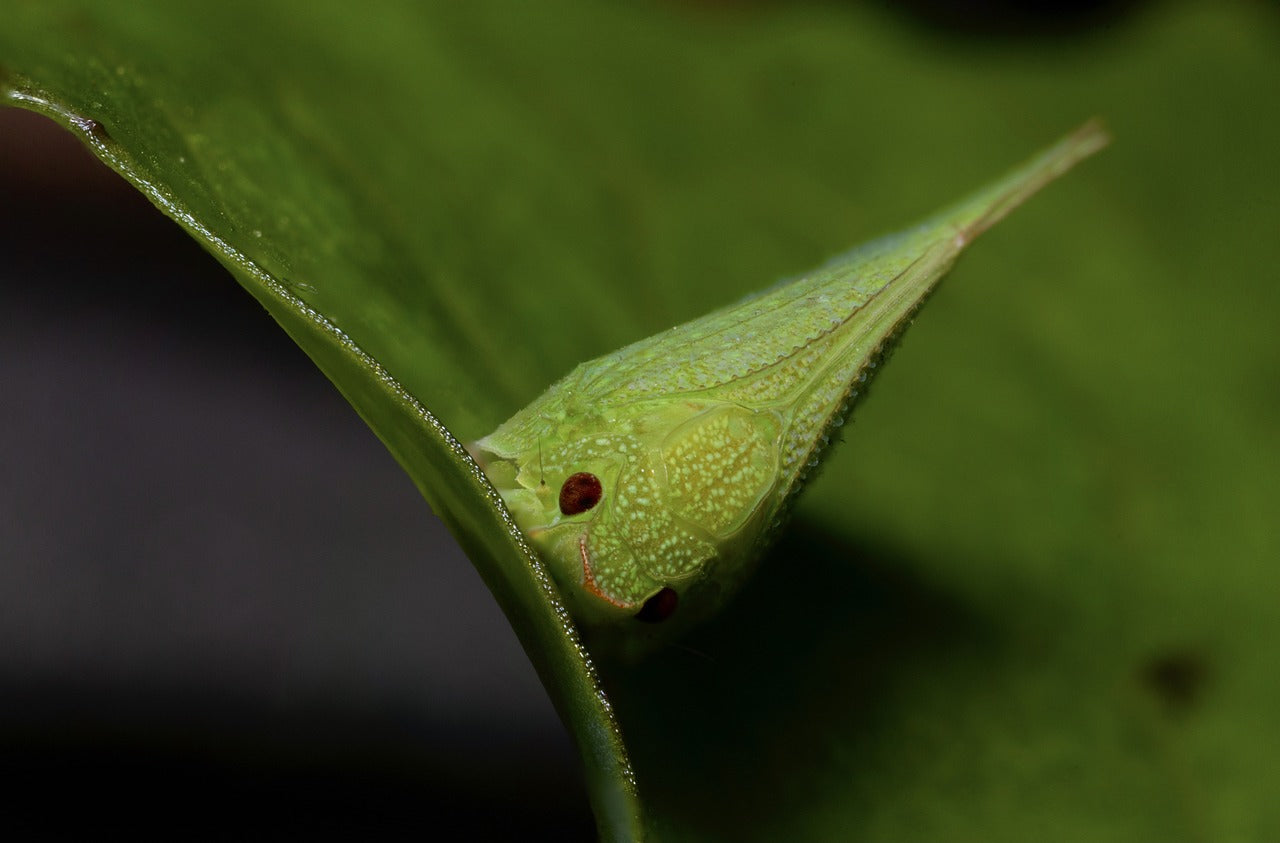
What’s the damage?
Leafhoppers leave the surface of the leaves covered in light coloured clusters of dots, producing a mottled effect. This is caused by their toxic saliva! It looks a bit rubbish but doesn’t generally affect the plant’s overall health. If the leafhopper population gets out of control, the leaves can turn brown and drop off prematurely.
How to get rid
If you’ve only got a few affected leaves, it’s best to leave well alone - they won’t do too much damage. However if you see leafhoppers on your plants, you can wash them off with a hosepipe or oil spray.
Caterpillars
Caterpillars will eat the leaves of roses, preventing them from absorbing sufficient sunlight and causing stunted growth.
How to prevent them
To prevent moths and butterflies laying their eggs on your roses, you can deter them with a strong smelling spray such as pepper and garlic or vegetable oil and soap - making your own is the easiest way. You can also attract predators that feed on caterpillars, like bluetits, great tits, shrews and spiders.
What they look like
Unfortunately by the time the caterpillars are big enough to be spotted, some damage will already be done. There are as many different types as there are moths and butterflies (their parents) - here’s how to identify some of the most common. If you spot tiny eggs on the undersides of the leaves, that will most likely be caterpillars incoming…

What’s the damage?
Caterpillars eat holes in the leaves (and even flowers) of roses, leaving them translucent or skeletal in bad cases. The weakened leaves then turn brown and die.
How to get rid
You can pick them off by hand (with gloves as some of them are prickly) or with tweezers. If you keep chickens, any non-hairy caterpillars you find make a good snack for hens. If you’d rather the caterpillars didn’t die, you can release them into the wild, away from built up areas with gardens. OR plant your prize cauliflowers next to them, because from my bitter experience, they can’t resist those!
Preventing rose problems
Here are our growers’ top five essentials for preventing rose pests and diseases.
1. Choose healthy roses
When you’re choosing your roses, take a few minutes to check that they come from a reputable breeder who will have made sure the plant has the strongest disease resistance possible and that it’s been grown and stored in healthy conditions. Any good rose retailer should be able to give you information about the plant’s health and disease resistance - avoid those that don’t!
2. Plant at the right time of year
There’s a reason the poundshop sells off their bare root roses so cheap in May - they should only be planted when the rose is dormant, between November and April at a push, to ensure healthy growth. If they’ve been stored too long, they’ll probably be dried out and won’t grow well if at all. Potted roses can be planted at any time of year unless the ground is frozen or waterlogged. Learn more in our guide to planting roses.

3. Pick the right position to grow in
Roses need full sun (except for climbing and rambling roses, which can deal with some partial shade) and lots of air flow to prevent air-borne mildews and moulds.
4. Prune regularly
There are lots of plants that thrive on neglect, but roses aren’t one of them. You will need to prune them every year so they produce new, healthy growth every year.

5. Clean your pruners
Rose diseases spread easily between plants, and the best way to prevent this is to clean your pruners between each plant. You can do this by spraying a little rubbing alcohol on your pruners and wiping them with a clean cloth, or wiping them with an antibacterial wipe. It’s best to sharpen them regularly too, to make sure any cuts you make are clean and less likely to let infections in.
Last updated: 13/11/2023


